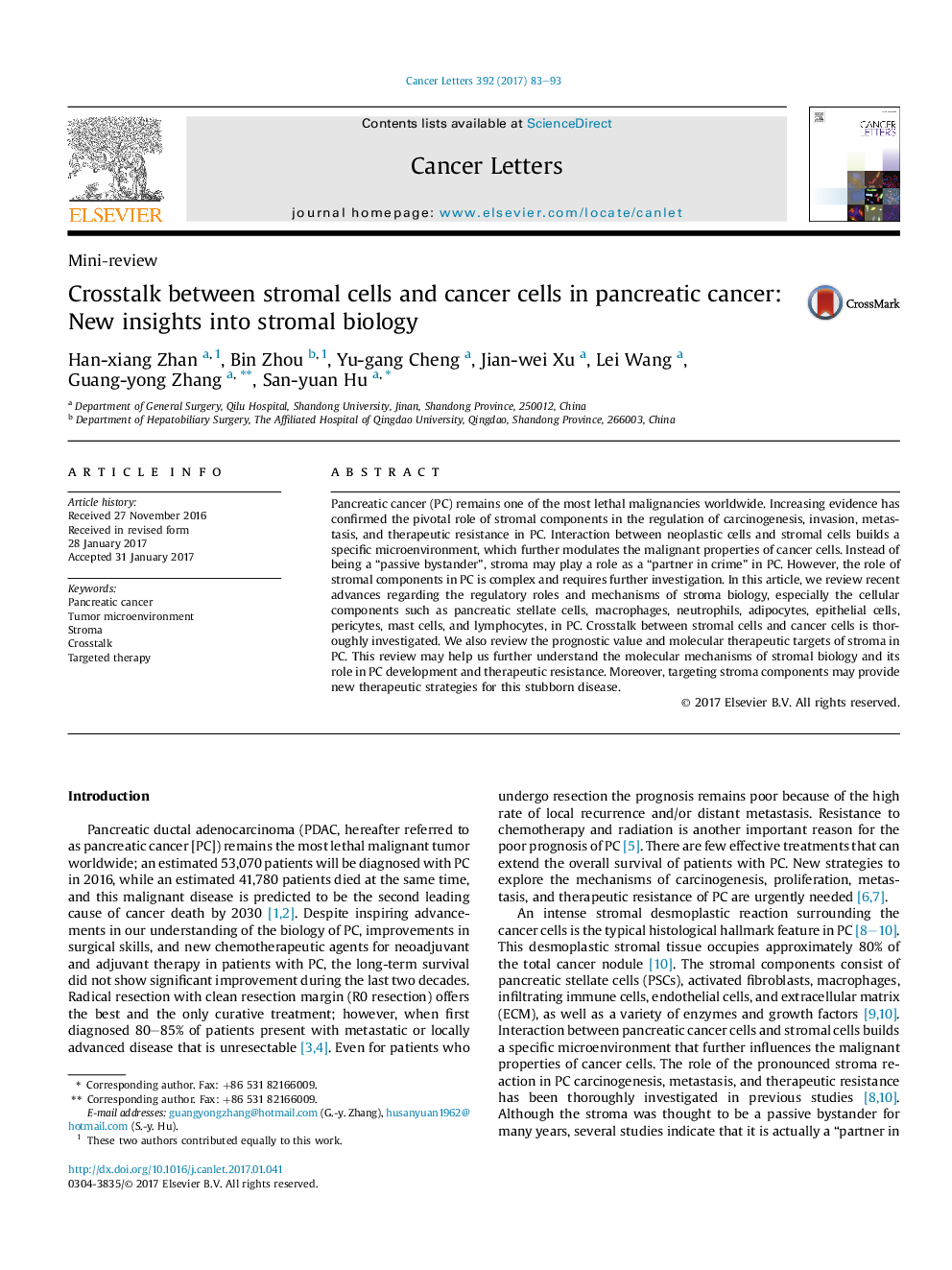| کد مقاله | کد نشریه | سال انتشار | مقاله انگلیسی | نسخه تمام متن |
|---|---|---|---|---|
| 5525366 | 1546677 | 2017 | 11 صفحه PDF | دانلود رایگان |
- Pancreatic stroma is far more complex than a “passive bystander” in the carcinogenesis and development of pancreatic cancer.
- The massive pancreatic cellular components play pivotal regulating roles in stroma biology.
- The crosstalk between stromal cells and pancreatic cancer cells provides prognostic value and therapeutic target.
Pancreatic cancer (PC) remains one of the most lethal malignancies worldwide. Increasing evidence has confirmed the pivotal role of stromal components in the regulation of carcinogenesis, invasion, metastasis, and therapeutic resistance in PC. Interaction between neoplastic cells and stromal cells builds a specific microenvironment, which further modulates the malignant properties of cancer cells. Instead of being a “passive bystander”, stroma may play a role as a “partner in crime” in PC. However, the role of stromal components in PC is complex and requires further investigation. In this article, we review recent advances regarding the regulatory roles and mechanisms of stroma biology, especially the cellular components such as pancreatic stellate cells, macrophages, neutrophils, adipocytes, epithelial cells, pericytes, mast cells, and lymphocytes, in PC. Crosstalk between stromal cells and cancer cells is thoroughly investigated. We also review the prognostic value and molecular therapeutic targets of stroma in PC. This review may help us further understand the molecular mechanisms of stromal biology and its role in PC development and therapeutic resistance. Moreover, targeting stroma components may provide new therapeutic strategies for this stubborn disease.
Journal: Cancer Letters - Volume 392, 28 April 2017, Pages 83-93
